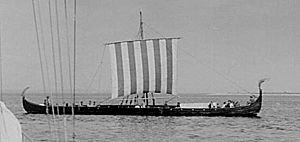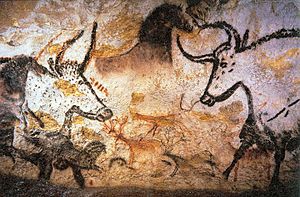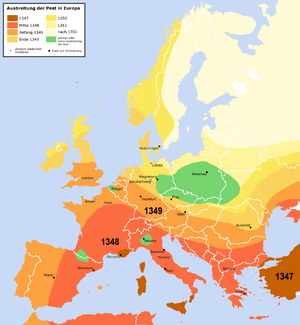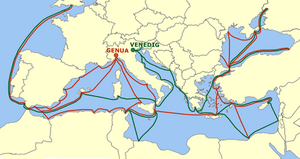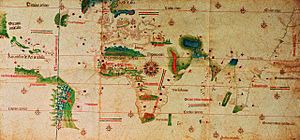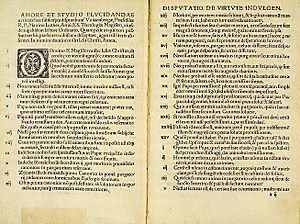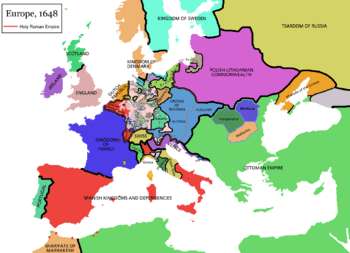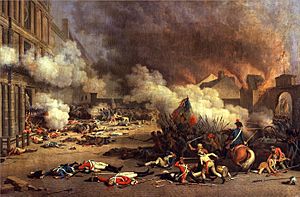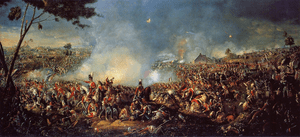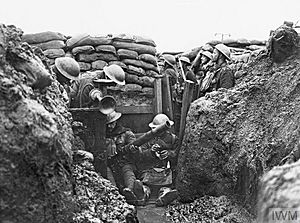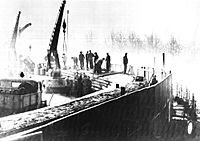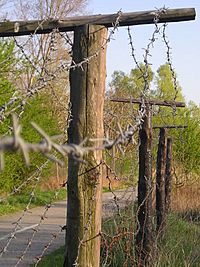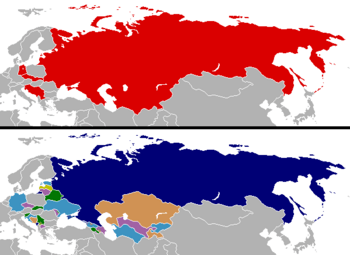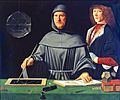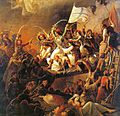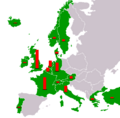History of Europe facts for kids

The history of Europe covers the peoples inhabiting Europe from prehistory to the present.
The period known as classical antiquity began with the emergence of the city-states of ancient Greece. Later, the Roman Empire came to dominate the entire Mediterranean Basin. The fall of the Roman Empire in AD 476 traditionally marks the start of the Middle Ages. Beginning in the 14th century a Renaissance of knowledge challenged traditional doctrines in science and theology. Simultaneously, the Protestant Reformation set up Protestant churches primarily in Germany, Scandinavia and England.
After 1800, the Industrial Revolution brought prosperity to Britain and Western Europe.
The main powers set up colonies in most of the Americas and Africa, and parts of Asia.
In the 20th century, World War I, and World War II resulted in massive numbers of deaths.
The Cold War dominated European geo-politics from 1947 to 1989.
Unification into a European Union moved forward after 1950, with some setbacks.
Today, most countries west of Russia belong to the NATO military alliance, along with the United States and Canada.
Contents
- Overview
- The origins
- The Greeks
- Rome
- Early Middle Ages
- High Middle Ages
- Later Middle Ages
- Renaissance and Reformation
- Colonial expansion
- Early Modern period: 16th, 17th and 18th century
- The English Civil War and Unification with Scotland
- The French Revolution
- Congress of Vienna
- The 19th century
- Early 20th century: the World Wars
- Late 20th century: the Cold War
- Recent history
- Chronology
- Related pages
- Images for kids
- See also
Overview
Some of the best-known civilizations of prehistoric Europe were the Minoan and the Mycenaean, which flourished during the Bronze Age until they collapsed in a short period of time around 1200 BC.
The period known as classical antiquity began with the emergence of the city-states of Ancient Greece. After ultimately checking the Persian advance in Europe through the Greco-Persian Wars in the 5th century BC, Greek influence reached its zenith under the expansive empire of Alexander the Great, spreading throughout Asia, Africa, and other parts of Europe. The Roman Empire came to dominate the entire Mediterranean basin. By 300 AD the Roman Empire was divided into the Western and Eastern empires. During the 4th and 5th centuries, the Germanic peoples of Northern Europe grew in strength, and repeated attacks led to the Fall of the Western Roman Empire. AD 476 traditionally marks the end of the classical period and the start of the Middle Ages.
In Western Europe, Germanic peoples became more powerful in the remnants of the former Western Roman Empire and established kingdoms and empires of their own. Of all of the Germanic peoples, the Franks would rise to a position of hegemony over Western Europe, the Frankish Empire reaching its peak under Charlemagne around 800. This empire was later divided into several parts; West Francia would evolve into the Kingdom of France, while East Francia would evolve into the Holy Roman Empire, a precursor to modern Germany and Italy. The British Isles were the site of several large-scale migrations.
The Viking Age, a period of migrations of Scandinavian peoples, occurred from the late 8th century to the middle 11th century. The Normans, a Viking people who settled in Northern France, had a significant impact on many parts of Europe, from the Norman conquest of England to Southern Italy and Sicily. The Rus' people founded Kievan Rus', which evolved into Russia. After 1000 the Crusades were a series of religiously motivated military expeditions originally intended to bring the Levant back under Christian rule. The Crusaders opened trade routes which enabled the merchant republics of Genoa and Venice to become major economic powers. The Reconquista, a related movement, worked to reconquer Iberia for Christendom.
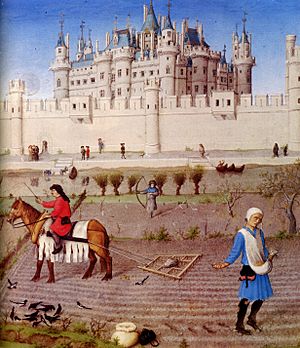
Eastern Europe in the High Middle Ages was dominated by the rise and fall of the Mongol Empire. Led by Genghis Khan, the Mongols were a group of steppe nomads who established a decentralized empire which, at its height, extended from China in the east to the Black and Baltic Seas in Europe. As Mongol power waned towards the Late Middle Ages, the Grand Duchy of Moscow rose to become the strongest of the numerous Russian principalities and republics and would grow into the Tsardom of Russia in 1547. The Late Middle Ages represented a period of upheaval in Europe. The epidemic known as the Black Death and an associated famine caused demographic catastrophe in Europe as the population plummeted. Dynastic struggles and wars of conquest kept many of the states of Europe at war for much of the period. In Scandinavia, the Kalmar Union dominated the political landscape, while England fought with Scotland in the Wars of Scottish Independence and with France in the Hundred Years' War. In Central Europe, the Polish–Lithuanian Commonwealth became a large territorial empire, while the Holy Roman Empire, which was an elective monarchy, came to be dominated for centuries by the House of Habsburg. Russia continued to expand southward and eastward into former Mongol lands. In the Balkans, the Ottoman Empire overran Byzantine lands, culminating in the Fall of Constantinople in 1453, which historians mark as the end of the Middle Ages.
Beginning in the 14th century in Florence and later spreading through Europe, a Renaissance of knowledge challenged traditional doctrines in science and theology. The rediscovery of classical Greek and Roman knowledge had an enormous liberating effect on intellectuals. Simultaneously, the Protestant Reformation under German Martin Luther questioned Papal authority. Henry VIII seized control of the English Church and its lands. The European religious wars between German and Spanish rulers. The Reconquista ended Muslim rule in Iberia. By the 1490s a series of oceanic explorations marked the Age of Discovery, establishing direct links with Africa, the Americas, and Asia. Religious wars continued to be fought in Europe, until the 1648 Peace of Westphalia. The Spanish crown maintained its hegemony in Europe and was the leading power on the continent until the signing of the Treaty of the Pyrenees, which ended a conflict between Spain and France that had begun during the Thirty Years' War. An unprecedented series of major wars and political revolutions took place around Europe and the world in the period between 1610 and 1700.
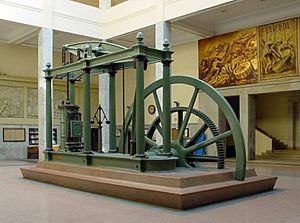
The Industrial Revolution began in Britain, based on coal, steam, and textile mills. Political change in continental Europe was spurred by the French Revolution under the motto liberté, égalité, fraternité. Napoleon Bonaparte took control, made many reforms inside France, and transformed Western Europe. But his rise stimulated both nationalism and reaction and he was defeated in 1814–15 as the old royal conservatives returned to power.
The period between 1815 and 1871 saw revolutionary attempts in much of Europe (apart from Britain). They all failed however. As industrial work forces grew in Western Europe, socialism and trade union activity developed. The last vestiges of serfdom were abolished in Russia in 1861. Greece and the other Balkan nations began a long slow road to independence from the Ottoman Empire, starting in the 1820s. Italy was unified in its Risorgimento in 1860. After the Franco-Prussian War of 1870–71, Otto von Bismarck unified the German states into an empire that was politically and militarily dominant until 1914. Most of Europe scrambled for imperial colonies in Africa and Asia in the Age of Empire. Britain and France built the largest empires, while diplomats ensured there were no major wars in Europe, apart from the Crimean War of the 1850s.
The outbreak of the First World War in 1914 was precipitated by the rise of nationalism in Southeastern Europe as the Great Powers took sides. The 1917 October Revolution led the Russian Empire to become the world's first communist state, the Soviet Union. The Allies, led by Britain and France, defeated the Central Powers, led by the German Empire and Austria-Hungary, in 1918. During the Paris Peace Conference the Big Four imposed their terms in a series of treaties, especially the Treaty of Versailles. The war's human and material devastation was unprecedented.
Germany lost its overseas empire and several provinces, had to pay large reparations, and was humiliated by the victors. They in turn had large debts to the United States. The 1920s were prosperous until 1929 when the Great Depression broke out, which led to the collapse of democracy in many European states. The Nazi regime under Adolf Hitler came to power in 1933, rearmed Germany, and along with Mussolini's Italy sought to assert themselves on the continent by demands and appeasement, leading eventually to the Second World War. Most of the fighting took place on the Eastern Front, and the war ended with the defeat of the Axis powers, leaving the USSR and the United States dominating Eastern and Western Europe respectively.
The Iron Curtain now separated the east under Moscow's control from the capitalist West. The United States launched the Marshall Plan from 1948–51 and NATO from 1949, and rebuilt industrial economies that all were thriving by the 1950s. France and West Germany took the lead in forming the European Economic Community, which eventually became the European Union (EU). Secularization saw the weakening of Protestant and Catholic churches across most of Europe, except where they were symbols of anti-government resistance, as in Poland. The Revolutions of 1989 brought an end to both Soviet hegemony and communism in Eastern Europe. Germany was reunited, Europe's integration deepened, and both NATO and the EU expanded to the east. The EU came under increasing pressure because of the worldwide recession after 2008.
The origins
Homo erectus and Neanderthals settled Europe long before the emergence of modern humans, Homo sapiens. The earliest appearance of anatomically modern people in Europe has been dated to 35,000 BC. Evidence of permanent settlement dates from the 7th millennium BC in Bulgaria, Romania and Greece. The Neolithic reached Central Europe in the 6th millennium BC and parts of Northern Europe in the 5th and 4th millennium BC. There is no prehistoric culture that covers the whole of Europe. For short introductions to the various cultures, see Palaeolithic, Mesolithic, Neolithic, Bronze Age and Iron Age.
The first well-known literate civilization in Europe was that of the Minoans of the island of Crete and later the Myceneans in the adjacent parts of Greece, starting at the beginning of the 2nd millennium BC. Around 400 BC, the La Tene culture spread over most of the interior as far as the Iberian Peninsula (Spain and Portugal), and later Anatolia. The Etruscans inhabited central Italy and Lombardy, where they were displaced by the Celts, who mingled with earlier residents of Iberia to produce a unique Celtiberian culture. As the Celts did not use a written language, knowledge of them is piecemeal. The Romans encountered them and recorded a great deal about them; these records and the archaeological evidence form our primary understanding of this extremely influential culture. The Celts posed a formidable, if disorganized, competition to the Roman state, that later colonized and conquered much of the southern portion of Europe.
The Greeks
At the end of the Bronze Age the older Greek kingdoms collapsed and a brilliant new civilization grew up in their place. The Hellenic civilization took the form of a collection of city-states (the most important being Athens and Sparta), having vastly differing types of government and cultures, including what are more-or-less unprecedented developments in various governmental forms, philosophy, science, politics, sports, theatre and music. The Hellenic city-states founded a large number of colonies on the shores of the Black Sea and the Mediterranean sea, Asia Minor, Sicily and Southern Italy in Magna Graecia, but in the 4th century BC their internal wars made them an easy prey for king Philip II of Macedon. The campaigns of his son Alexander the Great spread Greek culture into Persia, Egypt and India, but also favoured contact with the older learnings of those countries, opening up a new period of development, known as Hellenism.
Rome
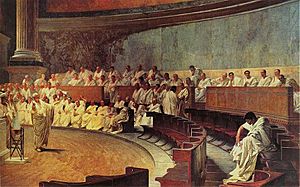
Much of Greek learning was assimilated by the nascent Roman state as it expanded outward from Italy, taking advantage of its enemies' inability to unite: the only real challenge to Roman ascent came from the Phoenician colony of Carthage, but its defeat in the end of the 3rd century BC marked the start of Roman hegemony. First governed by kings, then as a senatorial republic (the Roman Republic), Rome finally became an empire at the end of the 1st century BC, under Augustus and his authoritarian successors. The Roman Empire had its centre in the Mediterranean Sea, controlling all the countries on its shores; the northern border was marked by the Rhine and Danube rivers; under emperor Trajan (2nd century AD) the empire reached its maximum expansion, including Britain, Romania and parts of Mesopotamia. The empire brought peace, civilization and an efficient centralized government to the subject territories, but in the 3rd century a series of civil wars undermined its economic and social strength. In the 4th century, the emperors Diocletian and Constantine were able to slow down the process of decline by splitting the empire into a Western and an Eastern part. Whereas Diocletian severely persecuted Christianity, Constantine declared an official end to state-sponsored persecution of Christians in 313 with the Edict of Milan, thus setting the stage for the empire to later become officially Christian in about 380 (which would cause the Church to become an important institution).
Early Middle Ages
Western Europe emerged as the site of a distinct civilization after the fall of the Western Roman Empire in the 5th century, as barbarian invasions separated it from the rest of the Mediterranean, where the Eastern Roman Empire (a.k.a. Byzantine Empire) survived for another millennium. In the 7th century the Arab expansion brought Islamic cultures to the southern Mediterranean shores (from Turkey to Sicily and Spain), further enlarging the differences between the various Mediterranean civilizations. Huge amounts of technology and learning were lost, trade languished and people returned to local agrarian communities. In the same century, Bulgarians created the first Slavic state in Europe - Bulgaria. Feudalism replaced the centralized Roman administration. The only institution surviving the collapse of the Western Roman Empire was the Roman Catholic Church, which preserved part of the Roman cultural inheritance and remained the primary source of learning in its domain at least until the 13th century; the bishop of Rome, known as the Pope, became the leader of the western church (in the east his supremacy was never accepted).
The Holy Roman Empire emerged around 800, as Charlemagne, king of the Franks, subdued western Germany, large parts of Italy and chunks of surrounding countries; he received substantial help from an alliance with the Pope, who wanted to cut the remaining ties with the Byzantine Empire; in this way the domains of the Pope became an independent state in central Italy.
In the late 9th century and 10th century, northern and western Europe felt the burgeoning power and influence of the Vikings who raided, traded, conquered and settled swiftly and efficiently with their advanced sea-going vessels such as the longships.
In the 10th century independent kingdoms were established in Central Europe, e.g. Poland and Hungary.
The subsequent period, ending around 1000, saw the further growth of feudalism, which weakened the Holy Roman Empire.
High Middle Ages
After the East-West Schism, Western Christianity was adopted by newly created kingdoms of Central Europe: Poland, Hungary and Bohemia. The Roman Catholic Church developed as a major power, leading to conflicts between the Pope and Emperor.
Later Middle Ages
Early signs of the rebirth of civilization in western Europe began to appear in the 11th century as trade started again in Italy, leading to the economic and cultural growth of independent city states such as Venice and Florence; at the same time, nation-states began to take form in places such as France, England, Spain, and Portugal, although the process of their formation (usually marked by rivalry between the monarchy, the aristocratic feudal lords and the church) actually took several centuries. (See Reconquista for the latter two countries.) On the other hand, the Holy Roman Empire, essentially based in Germany and Italy, further fragmented into a myriad of feudal principalities or small city states, whose subjection to the emperor was only formal.
One of the largest catastrophes to have hit Europe was the bubonic plague, also known as the Black Death. There were numerous outbreaks, but the most severe was in the mid-1300s and is estimated to have killed a third of Europe's population. Since many Jews worked as money-lenders (usury was not allowed for Christians) and were generally more immune to disease (thanks to their kosher laws concerning hygiene), the Jews were often disliked by Europeans, so it was popular to blame them for the epidemic. This led to increased persecution of Jews in some areas. Thousands of Jews fled to Poland which, ironically, was spared by the plague.
Beginning in the 14th century, the Baltic Sea became one of the most important trade routes. The Hanseatic League, an alliance of trading cities, facilitated the absorption of vast areas of Poland, Lithuania and other Baltic countries into the economy of Europe. The conventional end of the Middle Ages is usually associated with the fall of the city Constantinople and of the Byzantine Empire to the Ottoman Turks in 1453. The Turks made the city the capital of their Ottoman Empire, which lasted until 1919 and also included Egypt, Syria and most of the Balkans.
Renaissance and Reformation
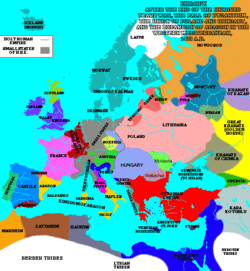
In the 15th century, at the end of the Middle Ages, powerful nation states had appeared, built by the New Monarchs who had centralized power in France, England, and Spain. On the other hand the Parliament in the Polish-Lithuanian Commonwealth grew in power, taking legislative rights from the Polish king. Contrariwise, the Church was losing much of its power because of corruption, internal conflicts, and the spread of culture leading to the artistic, philosophical, scientific and technological improvements of the Renaissance era.
The new nation states were frequently in a state of political flux and war. In particular, after Martin Luther started the Reformation in 1517, wars of politics and religion ravaged the continent: the schism of the dominant western church was to have major political, social and cultural implications for Europe. What became the split between Catholicism and Protestantism was particularly pronounced in England (where the king Henry VIII severed ties with Rome and proclaimed himself head of the church), and in Germany (where the Reformation united the various Protestant princes against the Catholic Habsburg emperors).
Unlike Western Europe, the countries of Central Europe, the Polish-Lithuanian Commonwealth and Hungary, resolved religious questions by adopting religious tolerance. Central Europe was already split between Eastern and Western Christianity. Now it became divided between Catholics, Protestants, Orthodox and Jews.
Colonial expansion
The numerous wars did not prevent the new states from exploring and conquering wide portions of the world, particularly in Asia (Siberia) and in the newly-discovered America. In the 15th century, Portugal led the way in geographical exploration, followed by Spain in early 16th century, were the first states to set up colonies in South America and trade stations on the shores of Africa and Asia, but they were soon followed by France, England and the Netherlands. In 1552 Russian tsar Ivan the Terrible conquered Kazan and the Yermak's voyage of 1580 led to the annexion of Siberia into Russia.
Colonial expansion proceeded in the following centuries (with some setbacks, such as the American Revolution and the wars of independence in many South American colonies). Spain had control of a great deal of South America, the Caribbean and the Philippines; Britain took the whole of Australia and New Zealand, most of India, and large parts of Africa and North America; France held parts of Canada and India (nearly all of which was lost to Britain in 1763), Indochina and large parts of Africa; the Netherlands gained the East Indies (now Indonesia) and islands in the Caribbean; Portugal obtained Brazil and several territories in Africa and Asia; and later, powers such as Germany, Belgium, Italy and Russia acquired further colonies.
This expansion helped the economy of the countries owning them. Trade flourished, because of the minor stability of the empires. The European countries fought wars, that were largely paid for by the money coming in from the colonies.
Early Modern period: 16th, 17th and 18th century
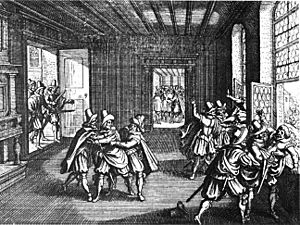
The Reformation had profound effects on the unity of Europe. Not only were nations divided one from another by their religious orientation, but some states were torn apart internally by religious strife, avidly fostered by their external enemies. France suffered this fate in the 16th century in the series of conflicts known as the French Wars of Religion, which ended in the triumph of the Bourbon Dynasty. England avoided this fate for a while and settled down under Elizabeth to a moderate Anglicanism. Germany, divided into numerous small states under the theoretical framework of the Holy Roman Empire, was also divided along internally drawn sectarian lines, until the Thirty Years' War seemed to see religion replaced by nationalism as the motor of European conflict. The single exception to this was the Polish-Lithuanian Commonwealth, an entity created by the agreement between the nobility of those two countries, highly valuing the religious tolerance.
Throughout the early part of this period, capitalism was replacing feudalism as the principal form of economic organization, at least in the western half of Europe. The expanding colonial frontiers resulted in a Commercial Revolution. The period is noted for the rise of modern science and the application of its findings to technological improvements, which culminated in the Industrial Revolution. New forms of trade and expanding horizons made new developments in international law necessary.
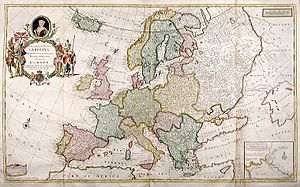
After the Treaty of Westphalia which ended the Thirty Years War, Absolutism became the norm of the continent, while parts of Europe experimented with constitutions foreshadowed by the English Civil War and particularly the Glorious Revolution. European military conflict did not cease, but had less disruptive effects on the lives of Europeans. In the advanced north-west, the Enlightenment gave a philosophical underpinning to the new outlook, and the continued spread of literacy, made possible by the printing press, created new secular forces in thought. Again, the Polish-Lithuanian Commonwealth would be an exception to this rule, with it's unique quasi-democratic Golden Freedom.
Eastern Europe was an arena of conflict for domination between Sweden, the Polish-Lithuanian Commonwealth and the Ottoman Empire. This period saw a gradual decline of these three powers which were eventually replaced by new enlightened absolutist monarchies, Russia, Prussia and Austria. By the turn of the 19th century they became new powers, having divided Poland between them, with Sweden and Turkey having experienced substantial territorial losses to Russia and Austria respectively. Numerous Polish Jews emigrated to Western Europe, founding Jewish communities in places where they had been expelled from during the Middle Ages.
The English Civil War and Unification with Scotland
Main article: English Civil War
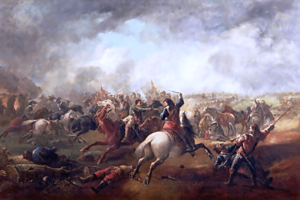
The first and foremost cause of the War was religion. When Charles became King in 1625 his Arminian style of Anglicanism and French Catholic wife seemed to herald a slide back toward Catholicism and popery. Additionally, he did not get along with Parliament, and unproductive sessions in the 1620s resulted in the closure of Parliament for 11 years. However, following the Scottish invasion in 1640 Charles was forced to call Parliament to raise money for an army. Parliament was furious and wanted its grievances addressed. The Petition of Right, pushed through by John Pym, forced Charles to agree that the English people had rights and liberties and that he had been undermining them. Charles attempted to arrest Pym and five others in February 1642 after they attempted to impeach the Queen, claiming she had been attempting to control Charles and impose a French style tyranny on them.
The King and his family left London in May 1642 and the raising of the royal standard at Nottingham started war. Charles's side were called the Cavaliers; Parliament's side were the Roundheads. In spite of initial successes, Charles's defeat was assured by 1644, when Pym signed an agreement with the Scots. Charles was defeated and captured at Marston Moor in 1647, but he fled to the Isle of Wight and enlisted the help of the Scots, as Parliament had reneged on their agreement. However, his hopes came to naught when the Roundheads defeated them at Naseby.
English Commonwealth
Pym had since died and the Grandees in the New Model Army and Parliament, including Oliver Cromwell, reluctantly came to the conclusion that they would have to kill Charles. He was found guilty by fifty nine Commissioners (Judges) of high treason and executed. With the abolition of the Monarchy Britain entered a period known as the English Commonwealth, Government by a Council of State with a Rump Parliament as the legislator. Real power rested with the Grandees of the New Model Army and in 1653 Oliver Cromwell became Lord Protector. After Cromwell died in 1658 his son Richard Cromwell inherited the title but not the power. After a short return of the Commonwealth, the Interregnum came to an end with the restoration of the Monarchy under Charles’ son King Charles II.
Act of Union
The Act of Union 1707 united the parliaments of the Kingdoms of England and Scotland to create a United Kingdom of Great Britain. Subsequently, the Act of Union 1800 united the kingdoms of Great Britain and Ireland to form the United Kingdom of Great Britain and Ireland.
Having gone through a political revolution 100 years early, Great Britain entered the 18th century in a stronger position than her continental rivals who were still controlled by absolute monarchs.
The French Revolution
Main article: French Revolution
By the late 18th century France's finances were in disarray, lavish royal expenditure and costly wars, such as the French intervention in the American war of Independence bankrupted the state, after repeated failed attempts at financial reform Louis XVI was persuaded to convene the Estates-General, a representative body of the country made up of three estates, the clergy, the nobility and the commoners, respectively. The members of the Estates-General assembled in Versaille in May 1789, but the debate as to which voting system should be used soon became an impasse. In June the third estate, join by members of the other two declared itself to be a National Assembly and swore an oath not to dissolve until France had a constitution and created, in July the National Constituent Assembly. At the same time the people of Paris revolted, famously storming the Bastille prison on 14 July.
At the time the assembly wanted to create a constitutional monarchy and over the following two years, passed various laws including the Declaration of the Rights of Man, the abolition of feudalism and a fundamental change in the relationship between France and Rome. At first the king went along with these changes and enjoyed reasonable popularity with the people, but as anti-royalism increased along with the threat of foreign invasion the king, now stripped of his power decided to flee along with his family. He was recognised and bought back to Paris, on 12 January 1793, having been convicted of treason he was executed.
On 20 September 1792 the National Convention abolished the monarchy and declared France a republic. Due to the emergency of war the National Convention created the Committee of Public Safety, controlled by the Jacobin Robespierre, to act as the country's executive. Under Robespierre the committee initiated the Reign of Terror, during which up to 40,000 people were executed in Paris, mainly nobles, and those convicted by the Revolutionary Tribunal, often on the flimsiest of evidence. Elsewhere in the country counter-revolutionary insurrections were brutally suppressed. The Robespierre was overthrown in the coup of 9 Thermidor (27 July 1794) and executed. The regime which followed ended the Terror and relaxed Robespierre's more extreme policies.
Napoleonic Wars
Napoleon Bonaparte was France's most successful general in the Revolutionary wars, having conquered large parts of Italy and forced the Austrians to sue for peace. In 1799 he returned from Egypt and on 18 Brumaire (9 November) overthrew the government, replacing it with the Consulate, in which he was First Consul. On 2 December 1804, after a failed assassination plot he crowned himself Emperor.
In 1805 Napoleon planned to invade Britain, but a renewed British alliance with Russia and Austria (Third Coalition), forced him to turn his attention towards the continent, while at the same time failure to lure the superior British fleet away from the English Channel, ending in a decisive French defeat at the Battle of Trafalgar on 21 October put an end to hopes of an invasion of Britain. On 2 December Napoleon defeated a numerically superior Austro-Russian army at Austerlitz, forcing Austria’s withdrawal from the coalition and dissolving the Holy Roman Empire.
In 1806 a Fourth Coalition was set up, on 14 October Napoleon defeated the Prussians at the Battle of Battle of Jena-Auerstedt, marched through Germany and defeated the Russians on 14 June 1807 at Freidland, the Treaties of Tilsit divided Europe between France and Russia and created the Duchy of Warsaw.On 12 June 1812 Napoleon invaded Russia with a Grande Armée on nearly 700,000 troops. After the measured victories at Smolensk and Borodino Napoleon occupied Moscow, only to find it burned by the retreating Russian Army, he was forced to withdraw, on the march back his army was harassed by Cossacks, and suffered disease and starvation. Only 20,000 of his men survived the campaign.
By 1813 the tide had began to turn from Napoleon, having been defeated by a seven nation army at Battle of Leipzig in October 1813. He was forced to abdicate after the Six Days Campaign and the occupation of Paris, under the Treaty of Fontainebleau he was exiled to the Island of Elba. He returned to France on 1 March 1815 (see Hundred Days, raised and army, but was comprehensively defeated by a British and Prussian force at Waterloo on 18 June.
Congress of Vienna

The Congress of Vienna was a conference between ambassadors from the major powers in Europe. It was held in Vienna from 1 October 1814, to 9 June 1815. The discussions continued despite Napoleon's return and the Congress's Final Act was signed nine days before his final defeat at Waterloo. The Congress was concerned with determining the entire shape of Europe after the Napoleonic wars, with the exception of the terms of peace with France, which had already been decided by the Treaty of Paris in May 1814.
The Congress's principal results, apart from its confirmation of France's loss of the territories annexed in 1795 - 1810, were the enlargement of Russia, (which gained most of the Duchy of Warsaw) and Prussia, which acquired Westphalia and the northern Rhineland. Germany was consolidated from the ~300 states of the Holy Roman Empire (dissolved in 1806) into 39 states. These states were formed into a loose German Confederation under the leadership of Prussia and Austria.
Poland was again divided by Russia, Prussia and Austria. The Polish Kingdom became part of Russia, while western Poland became Prussian and southern Poland was made Austrian. Only the Republic of Cracow stayed independant until 1846.
Representatives at the Congress agreed to numerous other territorial changes. Norway was transferred from Denmark to Sweden. Austria gained Lombardy-Venetia in Northern Italy, while much of the rest of North-Central Italy went to Habsburg dynasts (The Grand Duchy of Tuscany, the Duchy of Modena, and the Duchy of Parma). The Pope was restored to the Papal States. The Kingdom of Piedmont-Sardinia was restored to its mainland possessions, and also gained control of the Republic of Genoa. In Southern Italy the Bourbon Ferdinand IV was restored to the throne. A large United Kingdom of the Netherlands was created for the Prince of Orange, including both the old United Provinces and the formerly Austrian-ruled territories in the Southern Netherlands.
There were other, less important territorial adjustments, including significant territorial gains for the German Kingdoms of Hanover and Bavaria, and the Portuguese rights to the Territory of Olivenza were recognized.
The countries involved with the Congress also agreed to meet at intervals and this led to the establishment of the "Congress system". This system was frequently criticized by 19th century historians for ignoring national and liberal impulses associated with the French Revolution. However, in the twentieth century many historians began to admire the work of the statesmen at the Congress of Vienna, whose work appeared to have prevented another large-scale European war for nearly one hundred years (1818-1914).
The 19th century
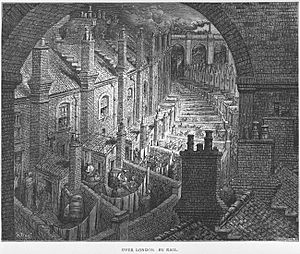
After the defeat of revolutionary France, the other great powers tried to restore the situation which existed before 1789. However, their efforts were unable to stop the spread of revolutionary movements: the middle classes had been deeply influenced by the ideals of democracy of the French revolution, the Industrial Revolution brought important economical and social changes, the lower classes started to be influenced by Socialist, Communist and Anarchistic ideas (especially those summarized by Karl Marx in the Manifesto of the Communist Party), and the preference of the new capitalists became Liberalism (a term which then, politically, meant something different from the modern usage). Further instability came from the formation of several nationalist movements (in Germany, Italy, Poland etc.), seeking national unification and/or liberation from foreign rule. As a result, the period between 1815 and 1871 saw a large number of revolutionary attempts and independence wars. Even though the revolutionaries were often defeated, most European states had become constitutional (rather than absolute) monarchies by 1871, and Germany and Italy had developed into nation states. The 19th century also saw the British Empire emerge as the world's first global power due in a large part to the Industrial Revolution and victory in the Napoleonic Wars.
The first revolution to occur in Europe after the French Revolution was the Serbian Uprising of 1804, and the Second Serbian Uprising of 1815, which resulted in the proclamation of autonomous Serbia by the Ottoman Empire. The political dynamics of Europe changed three times over the 19th century - once after the Congress of Vienna, and again after the Crimean War. In 1815 at the Congress of Vienna, the major powers of Europe managed to produce a peaceful balance of power among the empires after the Napoleonic wars (despite the occurrence of internal revolutionary movements). But the peace would only last until the Ottoman Empire had declined enough to become a target for the others. (See history of the Balkans#Rise of Independence.) This instigated the Crimean War in 1854 and began a tenser period of minor clashes among the globe-spanning empires of Europe that set the stage for the first World War. It changed a third time with the end of the various wars that turned the Kingdom of Sardinia and the Kingdom of Prussia into the Italian and German nation-states, significantly changing the balance of power in Europe.
Early 20th century: the World Wars

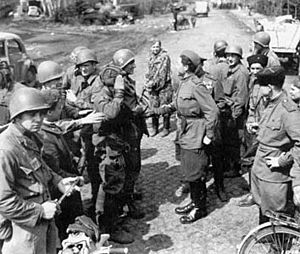
After the relative peace of most of the 19th Century, the rivalry between European powers exploded in 1914, when World War I started. On one side were Germany, Austria-Hungary and Turkey (the Central Powers/Triple Alliance), while on the other side stood Serbia and the Triple Entente - the loose coalition of France, the United Kingdom and Russia, which were joined by Italy in 1915 and by the United States in 1917. Despite the defeat of Russia in 1917 (the war was one of the major causes of the Russian Revolution, leading to the formation of the communist Soviet Union), the Entente finally prevailed in the autumn of 1918.
In the Treaty of Versailles (1919) the winners imposed hard conditions on Germany and recognized the new states (such as Poland, Czechoslovakia, Hungary, Austria, Yugoslavia, Finland, Estonia, Latvia, Lithuania) created in central Europe out of the defunct German, Austro-Hungarian and Russian empires, supposedly on the basis of national self-determination. Most of those countries engaged in local wars, the largest of them being the Polish-Soviet War (1919-1921). In the following decades, fear of Communism and the economic Depression of 1929-1933 led to the rise of extreme governments - Fascist or National Socialist - in Italy (1922), Poland (after the May Coup in 1926) Germany (1933), Spain (after a civil war ending in 1939) and other countries such as Hungary.
After allying with Mussolini's Italy in the "Pact of Steel" and signing a non-aggression pact with the Soviet Union, the German dictator Adolf Hitler and Soviet dictator Josef Stalin started World War II on 1 st and 17 th September 1939 attacking Poland and following a military build-up throughout the late 1930s. After initial successes (mainly the conquest of western Poland, much of Scandinavia, France and the Balkans before 1941) the Axis powers began to over-extend themselves in 1941. Hitler's ideological foes were the Communists in Russia but because of the German failure to defeat the United Kingdom and the Italian failures in North Africa and the Mediterranean the Axis forces were split between garrisoning western Europe and Scandinavia and also attacking Africa. Thus, the attack on the Soviet Union (which together with Germany had partitioned central Europe in 1939-1940) was not pressed with sufficient strength. Despite initial successes, the German army was stopped close to Moscow in December 1941. During this period, Germany began the systematic genocide of over 11 million people, including the majority of the Jews of Europe, in the Holocaust. Even as German persecution grew, over the next year the tide was turned and the Germans started to suffer a series of defeats, for example in the siege of Stalingrad and at Kursk. Meanwhile, Japan (allied to Germany and Italy since September 1940) attacked the British in south-east Asia and the United States in Hawaii on December 7, 1941; Germany then completed its over-extension by declaring war on the United States. War raged between the Axis Powers (Germany, Italy, and Japan) and the Allied Forces (British Empire, Soviet Union, and the United States). Allied Forces won in North Africa, invaded Italy in 1943, and invaded occupied France in 1944. In the spring of 1945 Germany itself was invaded from the east by Russia and from the west by the other Allies respectively; Hitler committed suicide and Germany surrendered in early May ending the war in Europe.
Late 20th century: the Cold War
World War I and especially World War II ended the pre-eminent position of western Europe. The map of Europe was redrawn at the Yalta Conference and divided as it became the principal zone of contention in the Cold War between the two power blocs, the capitalistic Western_countries and the communist Soviet Union. The U.S. and Western Europe (theUnited Kingdom, France, Italy, West Germany, etc.) established the NATO alliance as a protection against a possible Soviet invasion. Later, the Soviet Union and Eastern Europe (Poland, Czechoslovakia, Hungary, Romania, Bulgaria, East Germany) established the Warsaw Pact as a protection against a possible U.S. invasion.
Meanwhile, Western Europe slowly began a process of political and economic integration, desiring to unite Europe and prevent another war. This process resulted eventually in the development of organizations such as the European Union and the Council of Europe.
The Solidarność movement in the 1980s in weakened the Communist government in Poland. The Soviet leader Mikhail Gorbachev initiated perestroika and glasnost, which weakened Soviet influence in Eastern Europe. Soviet-supported governments collapsed, and West Germany absorbed East Germany by 1990. In 1991 the Soviet Union itself collapsed, splitting into fifteen states, with the Russian Federation taking the Soviet Union's seat on the United Nations Security Council.
The most violent breakup happened in Yugoslavia, in the Balkans. Four (Slovenia, Croatia, Bosnia and Herzegovina and Macedonia) out of six Yugoslav republics declared independence and for most of them a violent war ensued, in some parts lasting until 1995. The remaining two republics formed a new Federal Republic of Yugoslavia, under the direction of Slobodan Milošević. Milošević presided over the Kosovo War, and was overthrown after his government was weakened by NATO airstrikes against Yugoslavia. Following the ouster of Milošević, the country changed its name to Serbia and Montenegro as a move to placate the frictions between the two federal units and claimed to be instituting a Western-style democracy.
In the post-Cold War era, NATO and the EU have been gradually admitting most of the former members of the Warsaw Pact.
Recent history

Following the end of the Cold War, the European Economic Community pushed for closer integration, co-operation in foreign and home affairs, and started to increase its membership into the neutral and former communist countries. In 1993, the Maastricht Treaty established the European Union, succeeding the EEC and furthering political co-operation. The neutral countries of Austria, Finland and Sweden acceded to the EU, and those that didn't join were tied into the EU's economic market via the European Economic Area. These countries also entered the Schengen Agreement which lifted border controls between member states.
The Maastricht Treaty created a single currency for most EU members. The euro was created in 1999 and replaced all previous currencies in participating states in 2002. The most notable exception to the currency union, or eurozone, was the United Kingdom, which also did not sign the Schengen Agreement.
EU did not participate in the Yugoslav Wars, and was divided on supporting the United States in the 2003–2011 Iraq War. NATO has been part of the war in Afghanistan, but at a much lower level of involvement than the United States.
In 2004, the EU gained 10 new members. (Estonia, Latvia, and Lithuania, which had been part of the Soviet Union; Czech Republic, Hungary, Poland, Slovakia, and Slovenia, five former-communist countries; Malta, and the divided island of Cyprus.) These were followed by Bulgaria and Romania in 2007. Russia's regime had interpreted these expansions as violations against NATO's promise to not expand "one inch to the east" in 1990. Russia engaged in a number of bilateral disputes about gas supplies with Belarus and Ukraine which endangered gas supplies to Europe. Russia also engaged in a minor war with Georgia in 2008.
Supported by the United States and some European countries, Kosovo's government unilaterally declared independence from Serbia on 17 February 2008.
Public opinion in the EU turned against enlargement, partially due to what was seen as over-eager expansion including Turkey gaining candidate status. The European Constitution was rejected in France and the Netherlands, and then (as the Treaty of Lisbon) in Ireland, although a second vote passed in Ireland in 2009.
The financial crisis of 2007–08 effected Europe, and government responded with austerity measures. Limited ability of the smaller EU nations (most notably Greece) to handle their debts led to social unrest, government liquidation, and financial insolvency. In May 2010, the German parliament agreed to loan 22.4 billion euros to Greece over three years, with the stipulation that Greece follow strict austerity measures. See European sovereign-debt crisis.
Beginning in 2014, Ukraine has been in a state of revolution and unrest with two breakaway regions (Donetsk and Lugansk) attempting to join Russia as full federal subjects. On 16 March, a referendum was held in Crimea leading to the de facto secession of Crimea and its largely internationally unrecognized annexation to the Russian Federation as the Republic of Crimea.
In June 2016, in a referendum in the United Kingdom on the country's membership in the European Union, 52% of voters voted to leave the EU, leading to the complex Brexit separation process and negotiations, which led to political and economic changes for both the UK and the remaining European Union countries. The UK left the EU on 31 January 2020.
Chronology
- 700 BC: Homer composes The Iliad, an epic poem that represents the first piece of European literature.
- 440 BC: Herodotus defends Athenian political freedom in the Histories.
- 323 BC: Alexander the Great dies and his Macedonian Empire fragments.
- 44 BC: Julius Caesar is murdered. The Roman Republic enters its terminal crisis.
- 27 BC: Establishment of the Roman Empire under Octavian.
AD
- 45–55 (ca): First Christian congregations in mainland Greece and in Rome.
- 293: Diocletian reorganizes the Empire by creating the Tetrarchy.
- 330: Constantine makes Constantinople into his capital, a new Rome.
- 395: Following the death of Theodosius I, the Empire is permanently split into the Eastern Roman Empire (later Byzantium) and the Western Roman Empire.
- 476: Odoacer captures Ravenna and deposes the last Roman emperor in the west: traditionally seen as the end date of the Western Roman Empire.
- 527: Justinian I is crowned emperor of Byzantium. Orders the editing of Corpus Juris Civilis, Digest (Roman law).
- 597: Beginning of Roman Catholic Christianization of Anglo-Saxon England (missions and churches had been in existence well before this date, but their contacts with Rome had been loose or nonexistent)
- 600: Saint Columbanus uses the term "Europe" in a letter.
- 655: Jus patronatus.
- 681: Khan Asparukh leads the Bulgars and invades the Byzantine empire in the Battle of Ongal, and creates Bulgaria.
- 718: Tervel of Bulgaria helps the Byzantine Empire stop the Arabic invasion of Europe, and breaks the siege of Constantinople.
- 722: Battle of Covadonga in the Iberian Peninsula. Pelayo, a noble Visigoth, defeats a Muslim army that tried to conquer the Cantabrian coast. This helps establish the Christian Kingdom of Asturias, and marks the beginning of the Reconquista.
- 732: At the Battle of Tours, the Franks stop the advance of the Arabs into Europe.
- 800: Coronation of Charlemagne as Holy Roman Emperor.
- 813: Third Council of Tours: Priests are ordered to preach in the native language of the population.
- 843: Treaty of Verdun.
- 863: Saints Cyril and Methodius arrive in Great Moravia, initiating Christian mission among the Slav peoples.
- 864: Boris I of Bulgaria baptises the whole nation, converting the population from tengri, to Eastern Orthodox Christianity
- 872: Unification of Norway.
- 886: Cyril and Methodius students – Sava, Kliment, Naum, Gorazd, Angelariy – arrive in Bulgaria. The Cyrillic alphabet becomes the official Bulgarian alphabet.
- 895: Hungarian people led by Árpád start to settle in the Carpathian Basin.
- 917: In the Battle of Achelous (917) Bulgaria defeats the Byzantine empire, and Simeon I of Bulgaria is proclaimed as emperor, thus Bulgaria becomes an empire.
- 962: Otto I of East Francia is crowned as "Emperor" by the Pope, beginning the Holy Roman Empire.
- 988 Kievan Rus adopts Christianity, often seen as the origin of the Russian Orthodox Church-
- 1054: Start of the East–West Schism, which divides the Christian church for centuries.
- 1066: Successful Norman Invasion of England by William the Conqueror.
- 1095: Pope Urban II calls for the First Crusade.
- 12th century: The 12th century in literature saw an increase in the number of texts. The Renaissance of the 12th century occurs.
- 1128: Battle of São Mamede, formation of Portuguese sovereignty.
- 1250: Death of emperor Frederick II; end of effective ability of German emperors to exercise control in Italy.
- 1303: The period of the Crusades is over.
- 1309–1378: The Avignon Papacy
- 1315–1317: The Great Famine of 1315–1317 in Northern Europe
- 1341: Petrarch, the "Father of Humanism", becomes the first poet laureate since antiquity.
- 1337–1453: The Hundred Years' War between England and France.
- 1348–1351: Black Death kills about one-third of Europe's population.
- 1439: Johannes Gutenberg invents first movable type and the first printing press for books, starting the Printing Revolution.
- 1453: Fall of Constantinople to the Ottoman Turks.
- 1492: The Reconquista ends in the Iberian Peninsula. A Spanish expeditionary group, commanded by Christopher Columbus, lands in the New World.
- 1497: Vasco da Gama departs to India starting direct trade with Asia.
- 1498: Leonardo da Vinci paints The Last Supper in Milan as the Renaissance flourishes.
- 1508: Maximilian I the last ruling "King of the Romans" and the first "elected Emperor of the Romans".
- 1517: Martin Luther nails his 95 theses on indulgences to the door of the church in Wittenberg, triggering discussions which would soon lead to the Reformation
- 1519: Ferdinand Magellan and Juan Sebastián Elcano begin first global circumnavigation. Their expedition returns in 1522.
- 1519: Hernán Cortés begins conquest of Mexico for Spain.
- 1532: Francisco Pizarro begins the conquest of Peru (the Inca Empire) for Spain.
- 1543: Nicolaus Copernicus publishes De revolutionibus orbium coelestium (On the Revolutions of the Celestial Spheres).
- 1547: The Grand Duchy of Moscow becomes the Tsardom of Russia.
- 1582: The introduction of the Gregorian calendar; Russia refuses to adopt it until 1918.
- 1610: Galileo Galilei uses his telescope to discover the moons of Jupiter.
- 1618: The Thirty Years' War brings massive devastation to central Europe.
- 1648: The Peace of Westphalia ends the Thirty Years' War, and introduces the principle of the integrity of the nation state.
- 1687: Isaac Newton publishes Principia Mathematica, having a profound impact on The Enlightenment.
- 1699: Treaty of Karlowitz concludes the Austro-Ottoman War. This marks the end of Ottoman control of Central Europe and the beginning of Ottoman stagnation, establishing the Habsburg Monarchy as the dominant power in Central and Southeastern Europe.
- 1700: Outbreak of the War of the Spanish Succession and the Great Northern War. The first would check the aspirations of Louis XIV, king of France to dominate European affairs; the second would lead to Russia's emergence as a great power and a recognizably European state.
- 18th century: Age of Enlightenment spurs an intellectual renaissance across Europe.
- 1707: The Kingdom of Great Britain is formed by the union of the Kingdom of England and the Kingdom of Scotland.
- 1712: Thomas Newcomen invents first practical steam engine which begins Industrial Revolution in Britain.
- 1721: Foundation of the Russian Empire.
- 1775: James Watt invents a new efficient steam engine accelerating the Industrial Revolution in Britain.
- 1784: Immanuel Kant publishes Answering the Question: What Is Enlightenment?.
- 1789: Beginning of the French Revolution and end of the absolute monarchy in France.
- 1792–1802: French Revolutionary Wars.
- 1799: Napoleon comes to power as dictator of France.
- 1803–1815: Napoleonic Wars end in defeat of Napoleon.
- 1806: Napoleon abolishes the Holy Roman Empire.
- 1814–15: Congress of Vienna; Treaty of Vienna; France is reduced to 1789 boundaries; Reactionary forces dominate across Europe.
- 1825: George Stephenson opens the Stockton and Darlington Railway the first steam train railway for passenger traffic in the world.
- 1836: Louis Daguerre invents first practical photographic method, in effect the first camera.
- 1838: SS Great Western, the first steamship built for regularly scheduled transatlantic crossings enters service.
- 1848: Revolutions of 1848 and publication of The Communist Manifesto.
- 1852: Start of the Crimean War, which ends in 1855 in a defeat for Russia.
- 1859: Charles Darwin publishes On the Origin of Species.
- 1861: Unification of Italy after victories by Giuseppe Garibaldi.
- 1866: First commercially successful transatlantic telegraph cable is completed.
- 1860s: Russia emancipates its serfs and Karl Marx completes the first volume of Das Kapital.
- 1870: Franco-Prussian War and the fall of the Second French Empire.
- 1871: Unification of Germany under the direction of Otto von Bismarck.
- 1873: Panic of 1873 occurs. The Long Depression begins.
- 1885: Karl Benz invents Benz Patent-Motorwagen, the world's first automobile.
- 1885: First permanent citywide electrical tram system in Europe (in Sarajevo).
- 1895: Auguste and Louis Lumière begin exhibitions of projected films before the paying public with their cinematograph, a portable camera, printer, and projector.
- 1902: Guglielmo Marconi sends first transatlantic radio transmission.
- 1914: Archduke Franz Ferdinand of Austria is assassinated; World War I begins.
- 1917: Vladimir Lenin and the Bolsheviks seize power in the Russian Revolution. The ensuing Russian Civil War lasts until 1922.
- 1918: World War I ends with the defeat of Germany and the Central Powers. Ten million soldiers killed; collapse of Russian, German, Austrian, and Ottoman empires.
- 1918: Collapse of the German Empire and monarchic system; founding of Weimar Republic.
- 1918: Worldwide Spanish flu epidemic kills millions in Europe.
- 1918: Austro-Hungarian Empire dissolves.
- 1919: Versailles Treaty strips Germany of its colonies, several provinces and its navy and air force; limits army; Allies occupy western areas; reparations ordered.
- 1920: League of Nations begins operations; largely ineffective; defunct by 1939.
- 1921–22: Ireland divided; Irish Free State becomes independent and civil war erupts.
- 1922: Benito Mussolini and the Fascists take power in Italy.
- 1929: Worldwide Great Depression begins with stock market crash in New York City.
- 1933: Adolf Hitler and the Nazis take power in Germany.
- 1935: Italy conquers Ethiopia; League sanctions are ineffective.
- 1936: Start of the Spanish Civil War; ends in 1939 with victory of Nationalists who are aided by Germany and Italy.
- 1938: Germany escalates the persecution of Jews with Kristallnacht.
- 1938: Appeasement of Germany by Britain and France; Munich agreement splits Czechoslovakia; Germany seized the remainder in 1939.
- 1939: Britain and France hurriedly rearm; failed to arrange treaty with USSR.
- 1939: Adolf Hitler and Joseph Stalin agree partition of Eastern Europe in Molotov–Ribbentrop Pact.
- 1939: Germany invades Poland, starting the Second World War.
- 1940: Great Britain under Winston Churchill becomes the last nation to hold out against the Nazis after winning the Battle of Britain.
- 1941: U.S. begins large-scale lend-lease aid to Britain, Free France, the USSR and other Allies; Canada also provides financial aid.
- 1941: Germany invades the Soviet Union in Operation Barbarossa; fails to capture Moscow or Leningrad.
- 1942: Nazi Germany commences the Holocaust — a Final Solution, with the murder of 6 million Jews.
- 1943: After Stalingrad and Kursk, Soviet forces begin recapturing Nazi-occupied territory in the East.
- 1944: U.S., British and Canadian armed forces invade Nazi-occupied France at Normandy.
- 1945: Hitler commits suicide, Mussolini is murdered. World War II ends with Europe in ruins and Germany defeated.
- 1945: United Nations formed.
- 1947: The British Empire begins a process of voluntarily dismantling with the granting of independence to India and Pakistan.
- 1947: Cold War begins as Europe is polarized East versus West.
- 1948–51: U.S. provides large sums to rebuild Western Europe through the Marshall Plan; stimulates large-scale modernization of European industries and reduction of trade restrictions.
- 1949: The NATO alliance is established.
- 1955: USSR creates a rival military coalition, the Warsaw Pact.
- 1950: The Schuman Declaration begins the process of European integration.
- 1954: The French Empire begins to be dismantled; Withdraws from Vietnam.
- 1956: Suez Crisis signals the end of the effective power of the British Empire.
- 1956: Hungarian Uprising defeated by Soviet military forces.
- 1957: Treaties of Rome establish the European Economic Community from 1958.
- 1968: The May 1968 events in France lead France to the brink of revolution.
- 1968: The Prague Spring is defeated by Warsaw Pact military forces. The Club of Rome is founded.
- 1980: The Solidarność movement under Lech Wałęsa begins open, overground opposition to the Communist rule in Poland.
- 1985: Mikhail Gorbachev becomes leader of the Soviet Union and begins reforms which inadvertently leads to the fall of Communism and the Soviet Union.
- 1986: Chernobyl disaster occurs, the worst nuclear disaster in history.
- 1989: Communism overthrown in all the Warsaw Pact countries except the Soviet Union. Fall of the Berlin Wall (opening of unrestrained border crossings between east and west, which effectively deprived the wall of any relevance).
- 1990: Reunification of Germany.
- 1991: Breakup of Yugoslavia and the beginning of the Yugoslav Wars.
- 1991: Dissolution of the Soviet Union and the creation of the Commonwealth of Independent States.
- 1993: Maastricht Treaty establishes the European Union.
- 2002: End of European colonial empires with the independence of East Timor, formerly Portuguese Timor.
- 2004: Slovenia, Hungary, the Czech Republic, Slovakia, Poland, Lithuania, Latvia, Estonia, Cyprus and Malta join the European Union.
- 2007: Romania and Bulgaria join the European Union.
- 2008: The Great Recession begins. Unemployment rises in some parts of Europe.
- 2013: Croatia joins the European Union.
- 2014: Revolution in Ukraine and serious tensions between Russia, Ukraine and the European Union.
- 2015: European migrant crisis starts.
- 2020: The United Kingdom leaves the European Union.
- 2020: COVID-19 pandemic, hardest hit are Italy, Spain and the UK.
Related pages
Images for kids
-
The Parthenon, an ancient Athenian Temple on the Acropolis (hill-top city) fell to Rome in 176 BC
-
The Roman republic and its neighbours in 58 BC.
-
Cicero addresses the Roman Senate to denounce Catiline's conspiracy to overthrow the Republic, by Cesare Maccari
-
The Roman Empire at its greatest extent in 117 AD, under the emperor Trajan
-
Map of the partition of the Roman Empire in 395, at the death of Theodosius I: the Western Roman Empire is shown in red and the Eastern Roman Empire (Byzantine Empire) is shown in purple
-
Europe in 1097, as the First Crusade to the Holy Land commences
-
The Siege of Antioch, from a medieval miniature painting, during the First Crusade
-
"Christianization of Lithuania in 1387", oil on canvas by Jan Matejko, 1889, Royal Castle in Warsaw
-
Portrait of Luca Pacioli, the founder of accounting, by Jacopo de' Barbari (Museo di Capodimonte).
-
Cantino planisphere, 1502, earliest chart showing explorations by Vasco da Gama, Columbus and Cabral
-
Europa regina, 1570 print by Sebastian Münster of Basel
-
Alberico Gentili, the Father of international law.
-
Maria Theresa being crowned Queen of Hungary in the St. Martin's Cathedral, Pressburg (Bratislava)
-
The storming of the Bastille in the French Revolution of 1789
-
Cheering the Revolutions of 1848 in Berlin
-
Beginning in 1821, the Greek War of Independence began as a rebellion by Greek revolutionaries against the ruling Ottoman Empire.
-
Mikhail Bakunin speaking to members of the International Workingmen's Association at the Basel Congress in 1869
-
Paris Commune, 1871.
-
Giuseppe Garibaldi's redshirts during the Battle of Calatafimi, part of the Italian Unification.
-
Otto von Bismarck, Chancellor of Germany
-
The Berlin Conference (1884) headed by Otto von Bismarck that regulated European colonization in Africa during the New Imperialism period
-
FAI milicia during Spanish Social Revolution
-
The fight against German Nazis during the Warsaw Uprising in 1944.
See also
 In Spanish: Historia de Europa para niños
In Spanish: Historia de Europa para niños


